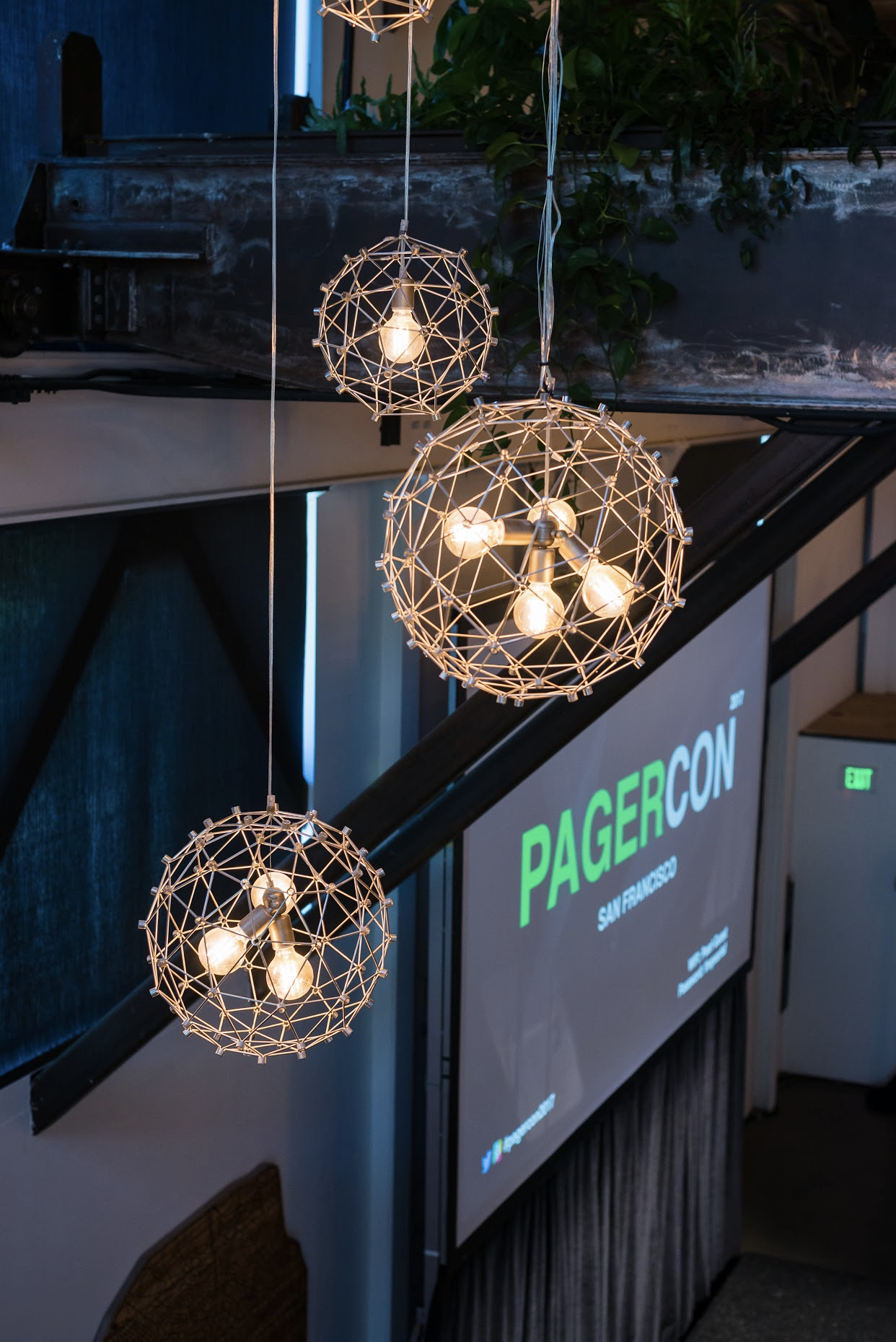- PagerDuty /
- Blog /
- Events & Community /
- What is PagerCon Anyways?
Blog
What is PagerCon Anyways?
Inception
Our first annual, internal conference, PagerCon, was held on November 18th, 2015 in San Francisco, followed by another event in Toronto on December 1st, 2015.

So much of our company’s culture is focused around empathy, and PagerCon is at the cornerstone of how we show that internally. I (a member of the organizing committee) wanted to take the opportunity to reflect back on how far we have come as an organization to make this grassroots technical conference come to life and to provide inspiration for your own organization’s tech conference.
The idea of PagerCon came from within the company. Engineers came together looking for an avenue to have technical discussions around efforts that were underway at the company. They wanted to teach their colleagues about pitfalls, learnings in their line of duty, share horror stories, and more. Engineers traveled to both San Francisco and Toronto to deliver their talks for a consistent experience across the two events. The support from our executive team has been paramount to the success of this conference. They’ve fully invested themselves into the success of PagerCon by requiring all of Product Development to be at the event, taking the whole day off from their regular duties, and being our biggest supporters.
The Format
We started by booking venues and setting a hard deadline for the call for papers. Then, we reached out to all of the engineering team to submit topics and offered support through office hours. Engineers were helping other engineers come up with topics to submit, and even helping draft proposals.
We rallied a subset of people across the department to act as the selection committee. They were tasked with the difficult choice of determining which talks were going to make the cut and be part of PagerCon. We wanted a healthy mix of speakers and topics, we looked at several factors like tenure at the company, level of experience, which team they were part of, different office locations, choice of topic, and we even considered if they were first-time or seasoned speakers. We had it all.
Once the speakers were determined, we made sure to confirm their involvement. While speakers prepared for their talks in the coming months, the committee began looking at various other aspects: equipment checklists, decorations, swag, furniture, catering, breakout sessions planning, slide karaoke, show flow, video recording or live streaming logistics, and so much more! This was a full-on event after all.
Evolution
Since 2015, PagerCon, much like PagerDuty as a whole, has grown. We have quality talks which are often accepted at external industry conferences, we have bigger and better swag for attendees and speakers, we have better food, bigger venues, and more attendees. PagerCon has also evolved from simply being an event where engineers gave deeply technical talks, to also be a place where Product Managers can share their journeys into customer discovery and work prioritization, or where Scrum Masters can expose challenging working dynamics as a result of distributed delivery teams. The entire Product Development team is involved — everyone from the SVP, to Executive Assistants, to Product Managers, to Data Researchers.
Inspiration
While the planning and coordination is time-consuming, the benefits of an internal tech conference are huge. Some benefits that we’ve seen across our own events include:
- Increased learning: In the world of highly complex systems and services, learning different approaches and hearing about future improvements have helped us streamline some organizational changes. This allows us to be agile and respond to constant change.
- Increased cross-team collaboration: We surfaced disconnects between teams and individuals, helping improve communication between engineering and the rest of the organization.
- Increased inspiration and empathy: Hearing about engineer on-call pain was useful for Product Managers when interacting with their teams. Hearing about Product Managers managing expectations and juggling business priorities was useful for engineers. The event helped sparked empathy between teams.
- Genuine relationships: This conference was an opportunity to meet, speak to, and mingle with others who you would likely not run into during your normal workday. As a result, we’ve seen relationships built across teams and business functions.
Your Turn
There are limited resources available for coordinating and organizing an internal conference. That’s one of the reasons why we like to teach others through lessons we’ve learned and are providing some pieces of advice that we believe were vital to PagerCon’s success. Here are some of our top tips:
- Pick your venue early (at least 5 months in advance) and allocate enough space for the show flow. Consider the following when looking for an event space:
-
- Will there be one track or two?
- Will there be breakout sessions?
- How many attendees and speakers will you have?
- Does furniture need to be moved throughout the day to accommodate for the agenda?
-
- Confirm speaker involvement. Select backup speakers just in case.
- Diversify the set of speakers. A dull conference will have speakers that all talk about the same thing. Mix it up!
- Publicize the agenda, venue, dates, and speakers as soon as possible.
- Designate an MC who keeps your show on track and can pump up the audience when the day gets long.
- Involve as many people in the company or department as you can.
- Make it fun! Swag, good food, after parties, breakout sessions, karaoke, are all good ways to engage attendees and make the event memorable.
PagerCon has brought together our Product Development teams and helped to identify important issues across our department. Empathy is evident in our product, but also in our company culture — our annual investment in PagerCon is proof of this. While this isn’t a comprehensive list needed to run an internal conference, we hope this inspires you to share your own product development learnings within your organization! Let us know how it goes or how you approach events like this in the comments below.

